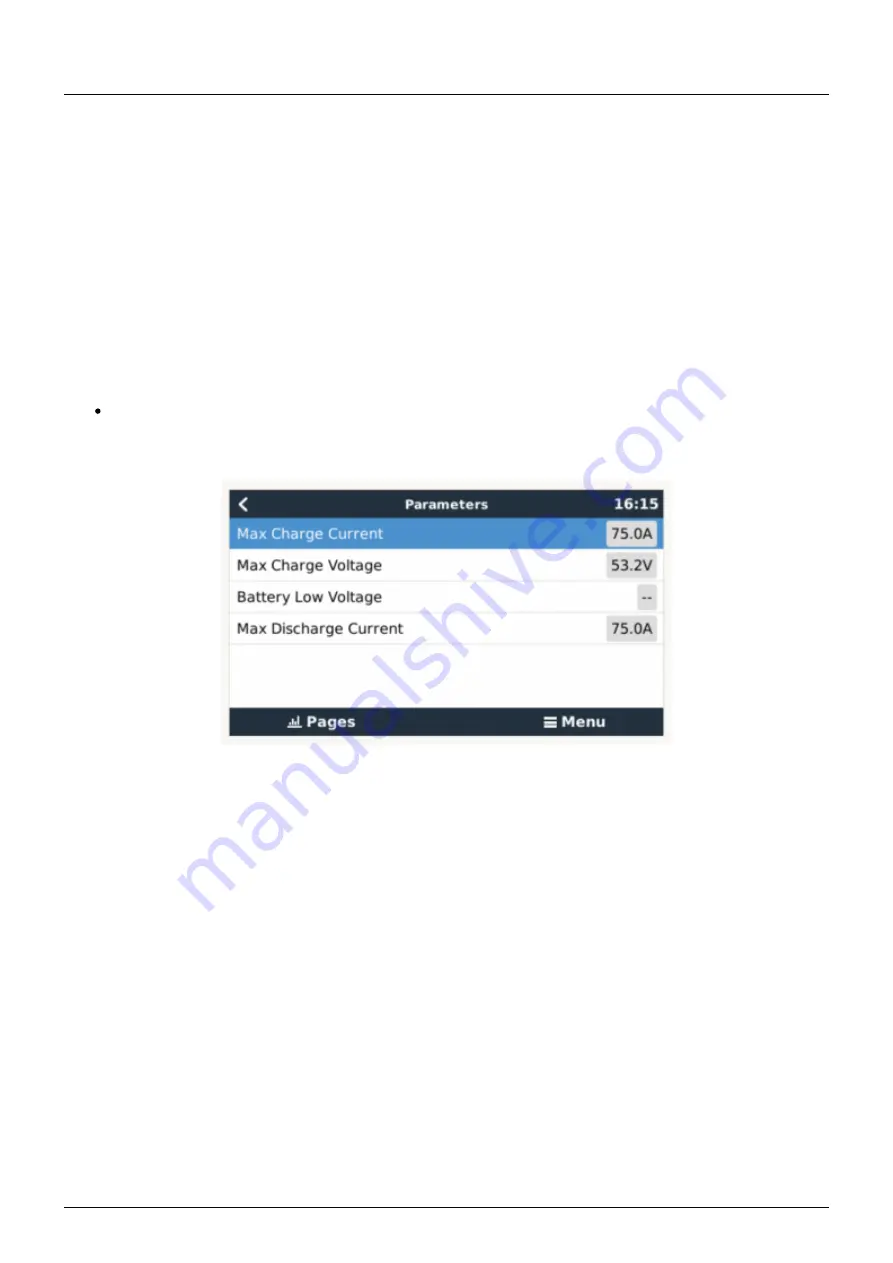
Last
update:
2021-04-19
11:00
battery_compatibility:pylontech_phantom https://www.victronenergy.com/live/battery_compatibility:pylontech_phantom?rev=1618822856
https://www.victronenergy.com/live/
Printed on 2022-03-05 21:27
over voltage internally. This imbalance is at a cell level, so might not be reflected as a high overall
battery voltage if measured with a Multimeter. This can then be turned off once the battery has
balanced itself properly.
The 'limit charge current' value that you set manually in the DVCC menu of the GX device will allow
you to set a value less than the ceiling Charge Current Limit (CCL) set by the BMS, if you want to
further restrict system wide charge current for some reason. You can enter a larger number than the
CCL, but the system will then stop at the CCL number (and not your manually entered figure).
For example if you only wired in 80A capacity wire / fuses through the system, and didn't want the
potential combined power delivery of a generator charging as well as a solar charge, you could limit
the total system charging (MPPT + MultiPlus) to that lower level, even though the batteries could
potentially absorb more.
The parameters option within the battery page shows the battery charge and discharge limits
as communicated to the DVCC system by the BMS.
The 'charge current limit' (CCL) as shown in the parameters screen (and received from the BMS, by
the GX device, via DVCC) will be the ceiling, and the system will try its best not to exceed that (as
much as it can - it may spike under momentary peaking conditions).
This parameters page is also a good place to check that all batteries are connected and working
properly. In see the individual battery data sheet for the normal working conditions, e.g. the current
limit per cell. For example, If each battery is rated to 25A charge current, and the menu shows a 75A
charge current limit ( 75 / 25 = 3 ) means there are 3 Pylontech battery modules connected.
Note that 'details' menu of the battery (e.g. Lowest and Highest cell voltages etc) is not currently
supported by Pylontech.
In off-grid systems, the inverter will prioritise running the load, and potentially exceed this Discharge
Current Limit. This could lead to the battery shutting down, and why it is important to follow the
minimum battery sizing guide.
In grid connected ESS systems, the inverter will do its best to respect the Discharge Current Limit and
use the grid to supplement the load if required.














